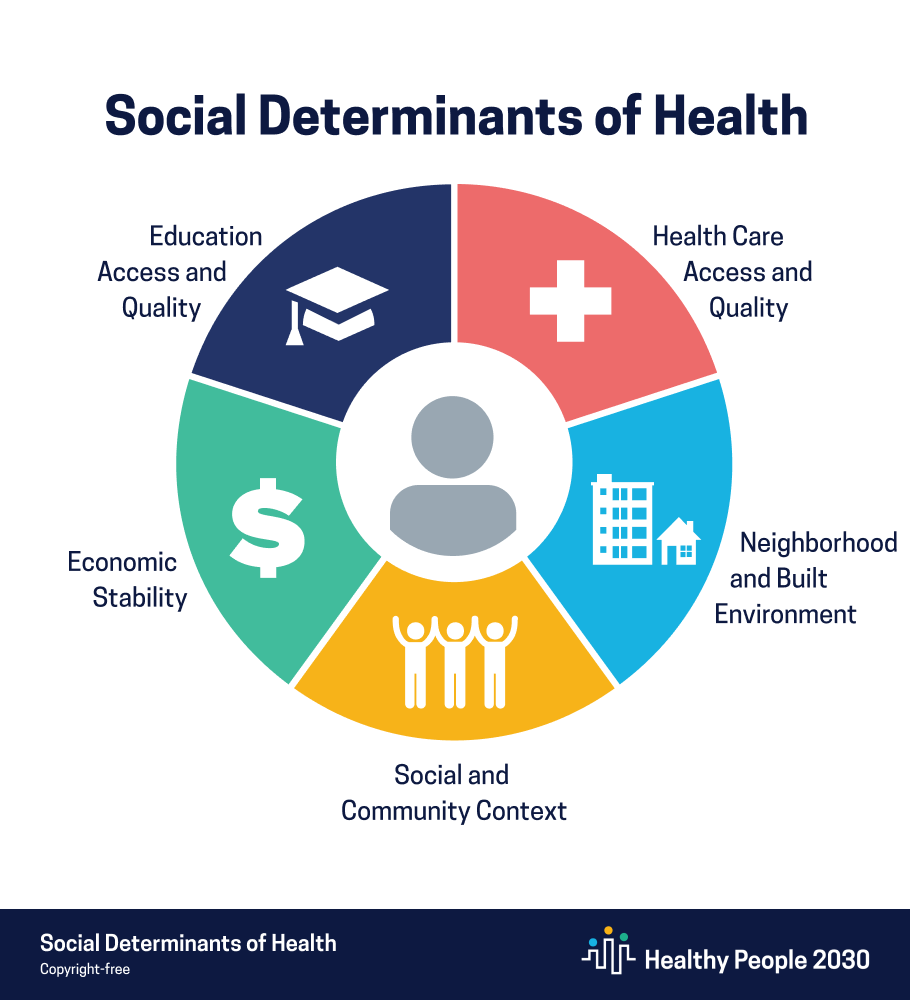Marginalized groups experience poorer mental and physical health outcomes than the general population due to health inequities largely driven by social determinants of health—the conditions in which people live throughout their lifespan. There is a causal, vicious cycle between disadvantages due to social determinants of health and the poor health outcomes (Marjadi et al., 2023).
Poor health status creates additional disadvantages by limiting a person’s ability to obtain education or engage in work. In addition, those who are disadvantaged often have limited access to healthcare services. This lack of access means that healthcare services may not be inclusive of the diverse populations who need them the most. Healthcare services which are not inclusive for diverse populations further contribute to these avoidable health inequities (Marjadi et al., 2023).
Healthy People 2030 defines social determinants of health (SDOH) as “the conditions in the environments where people are born, live, learn, work, play, worship, and age that affect a wide range of health, functioning, and quality-of-life outcomes and risks.” SDOH form the dynamic context for what we experience in our everyday lives. They are not abstract concepts—they are our life circumstances (Reed, 2022).
Social determinants of health are often grouped into 5 domains (Healthy People 2030, 2022):
- Healthcare access and quality
- Neighborhood and the built environment
- Social and community context
- Economic stability
- Education access and quality
Resources that enhance quality of life, such as safe and affordable housing, access to education, public safety, availability of healthy foods, local health services, and environments free of life-threatening toxins can have a significant influence on population health outcomes.

Social determinants of health. Source: ODPHP, Public Domain.
Oppressive systems dictate which people have access to key resources that determine health. Racism and classism create conditions where people of color, those living in poverty, and other marginalized groups have limited access to resources that impact health (Julian, Hardeman, and Huerto, 2020). Income, education, employment, and housing contribute to 50% of the variability in the length and quality of life and are largely responsible for many observed disparities in health (Towe et al., 2021).
The data are hard to ignore (Towe et al., 2021):
- Black Americans are 5.1 times more likely than White Americans to be incarcerated.
- Black Americans earned 61 cents for every dollar White Americans earned (Hispanic Americans earn 74 cents), disparities which have remained largely unchanged over the last several decades.
- Lower income people are more likely than higher income people to lack access to care and have poorer self-reported general health.
Most Americans are unaware of these health gaps, do not understand what causes them, and do not necessarily find them to be unfair. A survey conducted in 2008–2009 based on a national sample showed that most respondents (73%) were aware of health differences between the poor and middle-class people, but less than half (46%) reported awareness of health differences between White and Black Americans. Additionally, many Americans placed the responsibility for these outcomes on individual behaviors such as smoking, diet, and exercise, as well as access to clinical care as the primary drivers, and less so social determinants of health (Towe et al., 2021).
